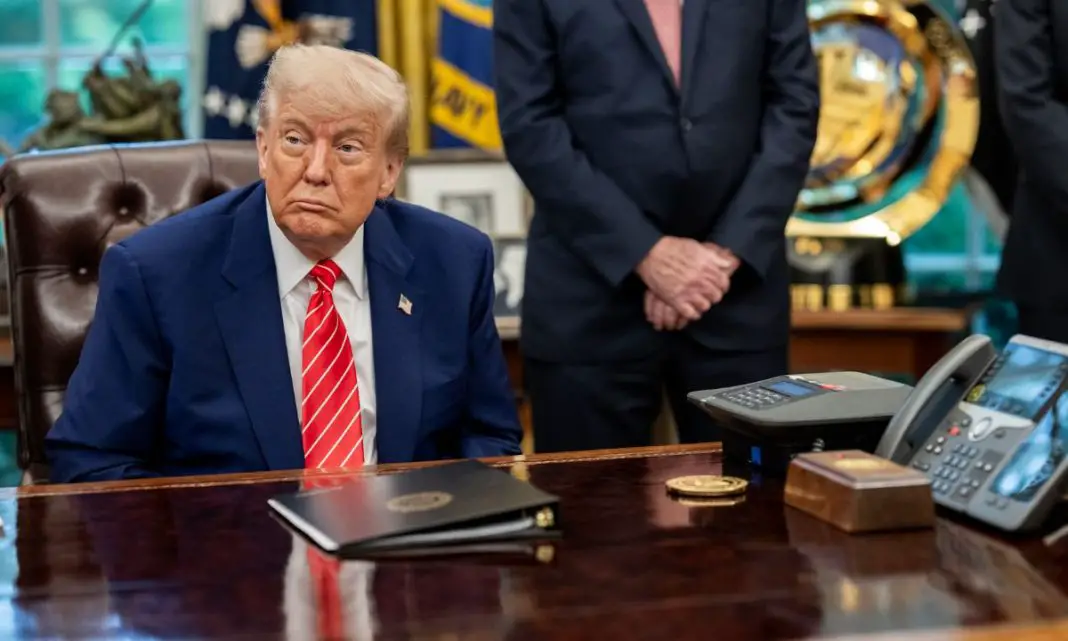Strategic Partnership Forged Against Supply Chain Vulnerabilities
President Donald Trump highlighted Australia’s emerging role as a vital supplier of rare earth elements amid China’s export curbs during Australian Prime Minister Anthony Albanese’s White House visit on Monday. The leaders inked a comprehensive $8.5 billion pact on mineral collaboration, developed over the past four to five months, encompassing collaborative ventures, American funding for Australian extraction and refinement operations, and alliances with other nations to ramp up rare earth output.
At a White House luncheon, Trump noted the opportune timing of the accord, quipping, “It was sort of good timing. We got it done just in time for the visit.” He forecasted a surge in supply, adding, “In about a year from now, we’ll have so much critical minerals and rare earths that you won’t know what to do with them. They’ll be worth about $2.” Albanese echoed the sentiment, affirming that while the U.S.-Australia bond was already strong, this minerals deal elevates it further, stating the agreement is “taking it to the next level.”
China’s recent tightening of rare earth exports—essential for everything from consumer gadgets like smartphones and electric vehicles to advanced lasers and defense systems—has exposed global dependencies. With Beijing dominating the market for these uniquely potent minerals and metals, Trump responded forcefully, vowing a 100% tariff on Chinese imports atop current duties, set to activate November 1, unless negotiations yield results. “I think that China will come to the table and make a very fair deal because if they don’t, they’re going to be paying us 157% in tariffs,” Trump declared, factoring in prior rates.
He also hinted at halting airplane component deliveries as leverage if tensions escalate. Trump confirmed an upcoming sit-down with President Xi Jinping at the Asia-Pacific Economic Cooperation gathering in South Korea on October 31 and November 1, followed by a prospective China trip early next year. Emphasizing reciprocity, he remarked, “We have to thrive together. It’s a two-way street,” while expressing optimism: “I think we’re going to end up having a fantastic deal with China.”
Beijing, in turn, signaled willingness for talks, with Foreign Ministry spokesman Guo Jiakun cautioning, “Tariff and trade wars do not serve any party’s interest,” and urging resolution “through consultation on the basis of equality, respect and mutual benefit.”
Building Resilient Domestic and Allied Supply Networks
This escalating trade friction highlights the international over-reliance on Chinese rare earths, a lapse rooted in decades of prioritizing cheap imports over U.S. domestic mining and processing. The rare earth family—spanning the 15 lanthanides in the periodic table, plus yttrium and scandium—fuels high-stakes applications, from precision-guided missiles and fighter aircraft to sustainable innovations like wind turbine generators and heat-resistant magnets in EV motors.
The Trump team is aggressively pursuing diversified sources, including untapped reserves at California’s Mountain Pass site, with Australia positioned as a prime partner. National Economic Council Director Kevin Hassett praised Australia’s prowess, calling it home to one of the “best mining economies on earth,” with top-tier refiners and abundant reserves.
“Australia is really, really going to be helpful in the effort to take the global economy and make it less risky, less exposed to the kind of rare earth extortion that we’re seeing from the Chinese,” Hassett told reporters.
Australian experts envision their country as a rare earth powerhouse, capable of delivering over 30 vital minerals craved by the U.S. Production currently centers on lighter variants in Western Australia, where the nation ranks as the fourth-largest producer of neodymium and praseodymium—key for magnets in electric vehicles, robotics, computing devices, mobiles, and both medical and defense gear.
Scarcer heavy elements like dysprosium, terbium, and yttrium cluster in the Northern Territory and eastern regions, per West Virginia University’s Shikha Sharma, a geology and geography professor. To rival China, Australia has launched a critical minerals stockpile but needs to scale up refining infrastructure. “It’s part of the agreement,” Trump confirmed regarding the reserve buildup.
The framework mandates pinpointing promising projects and supply chain weak spots, with each nation committing at least $1 billion within six months to fund initiatives that yield finished products for U.S. and Australian markets. Streamlined approvals will expedite developments, alongside scouting third-country collaborators. As outlined, “The participants will cooperate to assist in mapping mineral resources in Australia, the United States, and elsewhere as mutually determined, to support diversified critical mineral supply chain.”
On the trade front, the U.S. enjoyed an $18 billion surplus with Australia in 2024, keeping most goods under Trump’s standard 10% tariff threshold. “Australia pays among the lowest tariffs,” he observed. However, sensitive sectors like steel and aluminum face steeper, industry-targeted duties, potentially prompting exemption requests from Down Under.
Why This Bolsters the American Working Class
This minerals accord delivers tangible wins for everyday American workers by fortifying economic security and spurring opportunity in overlooked heartland communities. Rare earths power the factories building EVs, wind farms, and defense hardware—industries that could employ hundreds of thousands in mining towns and processing hubs like those in California, Appalachia, or the Rust Belt, where jobs have dwindled for decades.
By slashing dependence on China’s whims, it shields these sectors from price shocks and shortages that jack up costs for U.S. manufacturers, preserving blue-collar paychecks in auto plants, tech assembly lines, and energy outfits.
Trump’s tariff threats and the Australian pivot force fairer global terms, curbing offshoring that gutted domestic extraction gigs while channeling billions into American-led projects—revitalizing unions, training programs, and supply chains that prioritize U.S. labor over cheap foreign imports. Ultimately, it’s a blueprint for self-reliance that turns geopolitical leverage into stable wages and community revival, ensuring working families aren’t left vulnerable to overseas extortion.
What are your thoughts on the mineral deal with Australia? Let us know by commenting down below!


That’s GOD answering prayer to give President Trump wisdom & Favor to rise above the evil doers who R fighting very hard against him to keep Trump from exposing their evilness against Trump & all Americans!! So we don’t stop Praying & Trusting GOD!!!
尖端资源,价值百万,一网打尽,瞬间拥有!多重收益,五五倍增,八级提成,后劲无穷!摸币网,最嚣张的上线替下线赚钱网站:https://1925.mobi/